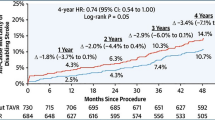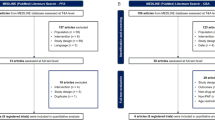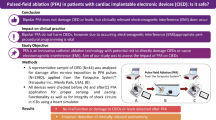Abstract
An increasing number of patients undergoing radiotherapy (RT) have cardiac implantable electronic devices [CIEDs, cardiac pacemakers (PMs) and implanted cardioverters/defibrillators (ICDs)]. Ionizing radiation can cause latent and permanent damage to CIEDs, which may result in loss of function in patients with asystole or ventricular fibrillation. Reviewing the current literature, the interdisciplinary German guideline (DEGRO/DGK) was developed reflecting patient risk according to type of CIED, cardiac condition, and estimated radiation dose to the CIED. Planning for RT should consider the CIED specifications as well as patient-related characteristics (pacing-dependent, previous ventricular tachycardia/fibrillation). Antitachyarrhythmia therapy should be suspended in patients with ICDs, who should be under electrocardiographic monitoring with an external defibrillator on stand-by. The beam energy should be limited to 6 (to 10) MV CIEDs should never be located in the beam, and the cumulative scatter radiation dose should be limited to 2 Gy. Personnel must be able to respond adequately in the case of a cardiac emergency and initiate basic life support, while an emergency team capable of advanced life support should be available within 5 min. CIEDs need to be interrogated 1, 3, and 6 months after the last RT due to the risk of latent damage.
Zusammenfassung
Strahlentherapie (RT) ist zunehmend häufig bei Patienten mit kardialen implantierten elektronischen Geräten (CIED; Herzschrittmacher [SM] und Kardioverter-Defibrillatoren [ICD]) indiziert. Durch ionisierende Strahlen können Schäden und Fehlfunktionen des CIED auftreten, die einen permanenten Funktionsverlust beim Gerät und eine Asystolie oder Kammerflimmern beim Patienten auslösen. Deshalb wurde vor dem Hintergrund der bisher verfügbaren Daten eine interdisziplinäre Leitlinie (DEGRO/DGK) erarbeitet, die sich an der zu erwartenden Strahlendosis am CIED sowie dem kardialen Risiko des Patienten orientiert. In die Planung zur Strahlentherapie sollten sowohl CIED-Spezifika als auch Charakteristika der kardialen Erkrankung (SM-Abhängigkeit, stattgehabte ventrikuläre Tachykardie/Kammerflimmern) einfließen. In implantierten ICDs sollte die antitachyarrhythmische Therapie zur RT pausiert werden. Diese Patienten sollten dann zwingend mittels Elektrokradioghramm überwacht werden und ein externer Defibrillator sollte unmittelbar verfügbar sein. Bei allen CIEDs sollte die Strahlenenergie auf 6(− 10) MV limitiert werden. Der CIED sollte niemals im direkten Strahlengang liegen. Eine Gesamtstreustrahlendosis sollte 2 Gy nicht überschreiten. Das Personal sollte in der Lage sein, adäquat auf kardiale Notfälle nach „Basic-life-support“-Kriterien zu reagieren. Ein Reanimationsteam muss innerhalb von 5 min präsent sein. Nach der letzten RT sollten die CIED innerhalb von 1, 3 und 6 Monaten erneut abgefragt werden, da ein Risiko für verspätet auftretende CIED-Schäden besteht.


Similar content being viewed by others
References
Berg RA, Hemphill R, Abella BS et al (2010) Part 5: adult basic life support: 2010 American heart association guidelines for cardiopulmonary resuscitation and emergency cardiovascular care. Circulation 122:685–705
Biotronik (2011) Strahlentherapie und Biotronik CRM-Implantate – Herzschrittmacher (IPG), Defibrillatoren (ICD) und CRT-Geräte. Berlin: Biotronik SE & Co. KG, Global Technical Service
Blamires NG, Myatt J (1982) X-ray effects on pacemaker type circuits. Pacing Clin Electrophysiol 5:151–155
Boston Scientific (2012) Therapeutic radiation and implantable device systems. http://www.bostonscientific.com/content/dam/bostonscientific/quality/educationresources/english/ACL_Therapeutic_Radiation_20120925.pdf
Croshaw R, Kim Y, Lappinen E et al (2011) Avoiding mastectomy: accelerated partial breast irradiation for breast cancer patients with pacemakers or defibrillators. Ann Surg Oncol 18:3500–3505
Dasgupta T, Barani IJ, Roach M 3rd (2011) Successful radiation treatment of anaplastic thyroid carcinoma metastatic to the right cardiac atrium and ventricle in a pacemaker-dependent patient. Radiat Oncol 6:16
Dorenkamp M, Roser M, Hamm B et al (2012) Magnetic resonance imaging and implantable cardiac devices. Current status and future perspectives of MR-compatible systems. Herz 37:136–145
Elders J, Kunze-Busch M, Jan Smeenk R et al (2013) High incidence of implantable cardioverter defibrillator malfunctions during radiation therapy: neutrons as a probable cause of soft errors. Europace 15:60–65
Ferrara T, Baiotto B, Malinverni G et al (2010) Irradiation of pacemakers and cardio-defibrillators in patients submitted to radiotherapy: a clinical experience. Tumori 96:76–83
Franco L, Gomez F, Iglesias A et al (2005) SEUs on commercial SRAM induced by low energy neutrons produced at a clinical linac facility. RADECS Proceedings, 2005
Frantz S, Wagner J, Langenfeld H (2003) Radiation-induced pacemaker malfunction. Z Kardiol 92:415–417
Gelblum DY, Amols H (2009) Implanted cardiac defibrillator care in radiation oncology patient population. Int J Radiat Oncol Biol Phys 73:1525–1531
Gomez DR, Poenisch F, Pinnix CC et al (2013) Malfunctions of implantable cardiac devices in patients receiving proton beam therapy: incidence and predictors. Int J Radiat Oncol Biol Phys 87:570–575
Hashii H, Hashimoto T, Okawa A et al (2013) Comparison of the effects of high-energy photon beam irradiation (10 and 18 MV) on 2 types of implantable cardioverter-defibrillators. Int J Radiat Oncol Biol Phys 85:840–845
Hashimoto T, Isobe T, Hashii H et al (2012) Influence of secondary neutrons induced by proton radiotherapy for cancer patients with implantable cardioverter defibrillators. Radiat Oncol 7:10
Hirose M, Tachikawa K, Ozaki M et al (2010) X-ray radiation causes electromagnetic interference in implantable cardiac pacemakers. Pacing Clin Electrophysiol 33:1174–1181
Hoecht S, Rosenthal P, Sancar D et al (2002) Implantable cardiac defibrillators may be damaged by radiation therapy. J Clin Oncol 20:2212–2213
Hudson F, Coulshed D, DʼSouza E et al (2010) Effect of radiation therapy on the latest generation of pacemakers and implantable cardioverter defibrillators: A systematic review. J Med Imaging Radiat Oncol 54:53–61
Hurkmans CW, Knegjens JL, Oei BS et al (2012) Management of radiation oncology patients with a pacemaker or ICD: a new comprehensive practical guideline in The Netherlands. Radiat Oncol 7:198
Hurkmans CW, Scheepers E, Springorum BG et al (2005) Influence of radiotherapy on the latest generation of implantable cardioverter-defibrillators. Int J Radiat Oncol Biol Phys 63:282–289
Hurkmans CW, Scheepers E, Springorum BG et al (2005) Influence of radiotherapy on the latest generation of pacemakers. Radiother Oncol 76:93–98
John J, Kaye GC (2004) Shock coil failure secondary to external irradiation in a patient with implantable cardioverter defibrillator. Pacing Clin Electrophysiol 27:690–691
St. Jude Medical (2014) http://www.sjm.de/media/2/D14051912/2410103808/Roentgenbestrahlung_therapeutisch.pdf
Kapa S, Fong L, Blackwell CR et al (2008) Effects of scatter radiation on ICD and CRT function. Pacing Clin Electrophysiol 31:727–732
Kesek M, Nyholm T, Asklund T (2012) Radiotherapy and pacemaker: 80 Gy to target close to the device may be feasible. Europace 14:1595
Keshtgar MR, Eaton DJ, Reynolds C et al (2012) Pacemaker and radiotherapy in breast cancer: is targeted intraoperative radiotherapy the answer in this setting? Radiat Oncol 7:128
Kim Y, Arshoun Y, Trombetta MG (2012) Pacemaker/implantable cardioverter-defibrillator dose in balloon high-dose-rate brachytherapy for breast cancer treatment. Brachytherapy 11:380–386
Kirova YM, Menard J, Chargari C et al (2012) Case study thoracic radiotherapy in an elderly patient with pacemaker: the issue of pacing leads. Med Dosim 37:192–194
Lambert P, Da Costa A, Marcy PY et al (2011) Pacemaker, implanted cardiac defibrillator and irradiation: management proposal in 2010 depending on the type of cardiac stimulator and prognosis and location of cancer. Cancer Radiother 15:238–249; quiz 57
Last A (1998) Radiotherapy in patients with cardiac pacemakers. Br J Radiol 71:4–10
Lau DH, Wilson L, Stiles MK et al (2008) Defibrillator reset by radiotherapy. Int J Cardiol 130:e37–38
Lester JF, Evans LM, Yousef Z et al (2014) A national audit of current cardiac device policies from radiotherapy centres across the UK. Clin Oncol (R Coll Radiol) 26:45–50
Link MS, Atkins DL, Passman RS et al (2010) Part 6: electrical therapies: automated external defibrillators, defibrillation, cardioversion, and pacing: 2010 American heart association guidelines for cardiopulmonary resuscitation and emergency cardiovascular care. Circulation 122:706–719
Little FA (1994) Pacemakers in radiotherapy. Clin Oncol (R Coll Radiol) 6:211–212
Lohr F, Baus W, Vorwerk H et al (2012) Rules and regulations applying to incidents in radiotherapy. Strahlenther Onkol 188:545–550
Makkar A, Prisciandaro J, Agarwal S et al (2012) Effect of radiation therapy on permanent pacemaker and implantable cardioverter-defibrillator function. Heart Rhythm 9:1964–1968
Manegold JC, Israel CW, Ehrlich JR et al (2007) External cardioversion of atrial fibrillation in patients with implanted pacemaker or cardioverter-defibrillator systems: a randomized comparison of monophasic and biphasic shock energy application. Eur Heart J 28:1731–1738
Marbach JR, Sontag MR, Van Dyk J et al (1994) Management of radiation oncology patients with implanted cardiac pacemakers: report of AAPM Task Group No. 34. American association of physicists in medicine. Med Phys 21:85–90
McCollough CH, Zhang J, Primak AN et al (2007) Effects of CT irradiation on implantable cardiac rhythm management devices. Radiology 243:766–774
Medtronic (2013) Therapeutic radiation. http://www.medtronic.com/wcm/groups/mdtcom_sg/@mdt/@corp/documents/documents/crdm_sl_radiation.pdf
Menard J, Campana F, Kirov KM et al (2011) Radiotherapy for breast cancer and pacemaker. Cancer Radiother 15:197–201
Mitra D, Ghosh K, Gupta P et al (2006) Radiation dose monitoring in a lung cancer patient with a pacemaker—a case report. Indian J Radiol Imaging 16:857–877
Mouton J, Haug R, Bridier A et al (2002) Influence of high-energy photon beam irradiation on pacemaker operation. Phys Med Biol 47:2879–2893
Munshi A, Wadasadawala T, Sharma PK et al (2008) Radiation therapy planning of a breast cancer patient with in situ pacemaker–challenges and lessons. Acta Oncol 47:255–260
Nemec J (2007) Runaway implantable defibrillator–a rare complication of radiation therapy. Pacing Clin Electrophysiol 30:716–718
Nibhanupudy JR, de Jesus MA, Fujita M et al (2001) Radiation dose monitoring in a breast cancer patient with a pacemaker: a case report. J Natl Med Assoc 93:278–281
Niehaus M, Tebbenjohanns J (2001) Electromagnetic interference in patients with implanted pacemakers or cardioverter-defibrillators. Heart 86:246–248
Oshiro Y, Sugahara S, Noma M et al (2008) Proton beam therapy interference with implanted cardiac pacemakers. Int J Radiat Oncol Biol Phys 72:723–727
Raitt MH, Stelzer KJ, Laramore GE et al (1994) Runaway pacemaker during high-energy neutron radiation therapy. Chest 106:955–957
Rothig H, Herrmann T, Kopcsek H (1995) Experience in dealing with artificial pacemaker patients during therapy with ionizing radiation. Strahlenther Onkol 171:398–402
Schlaff CD, Krauze A, Belard A et al (2014) Bringing the heavy: carbon ion therapy in the radiobiological and clinical context. Radiat Oncol 9:88
Sepe S, Schaffer P, Krimmel K et al (2007) Irradiation treatment of laryngeal cancer in a patient with an implantable cardioverter-defibrillator (ICD). Onkologie 30:378–380
Snow JS, Kalenderian D, Colasacco JA et al (1995) Implanted devices and electromagnetic interference: case presentations and review. J Invasive Cardiol 7:25–32
Soejima T, Yoden E, Y NI et al (2011) Radiation therapy in patients with implanted cardiac pacemakers and implantable cardioverter defibrillators: a prospective survey in Japan. J Radiat Res 52:516–521
Solan AN, Solan MJ, Bednarz G et al (2004) Treatment of patients with cardiac pacemakers and implantable cardioverter-defibrillators during radiotherapy. Int J Radiat Oncol Biol Phys 59:897–904
Souliman SK, Christie J (1994) Pacemaker failure induced by radiotherapy. Pacing Clin Electrophysiol 17:270–273
Sundar S, Symonds RP, Deehan C (2005) Radiotherapy to patients with artificial cardiac pacemakers. Cancer Treat Rev 31:474–486
TheTask Force on cardiac pacing, resynchronization therapy of the European Society of Cardiology. Developed in collaboration with the European Heart Rhythm Association, Brignole M et al (2014) 2013 ESC Guidelines on cardiac pacing and cardiac resynchronization therapy. Rev Esp Cardiol 67:58
Thomas D, Becker R, Katus HA et al (2004) Radiation therapy-induced electrical reset of an implantable cardioverter defibrillator device located outside the irradiation field. J Electrocardiol 37:73–74
Tondato F, Ng DW, Srivathsan K et al (2009) Radiotherapy-induced pacemaker and implantable cardioverter defibrillator malfunction. Expert Rev Med Devices 6:243–249
Tsekos A, Momm F, Brunner M et al (2000) The cardiac pacemaker patient–might the pacer be directly irradiated? Acta Oncol 39:881–883
Uiterwaal GJ, Springorum BGF, Scheepers E et al (2006) Interference detection in implantable defibrillators induced by therapeutic radiation therapy. Neth Heart J 14:330–334
Kuck KH, Hindricks G, Padeletti L, et al (2014) The EHRA white book. The current status of cardiac electrophysiology in ESC Member countries. http://www.escardio.org/communities/EHRA/publications/Documents/ehra-white-book-2014.pdf
Wadasadawala T, Pandey A, Agarwal JP et al (2011) Radiation therapy with implanted cardiac pacemaker devices: a clinical and dosimetric analysis of patients and proposed precautions. Clin Oncol (R Coll Radiol) 23:79–85
Wilkinson JD, Bounds C, Brown T et al (2005) Cancer-Radiotherapy equipment as a cause of soft errors in electronic equipment. IEEE transactions device and materials reliability 5:449–451
Wilm M, Kronholz HL, Schutz J et al (1994) The modification of programmable pacemakers by therapeutic irradiation. Strahlenther Onkol 170:225–231
Zaremba T, Jakobsen AR, Thogersen AM et al (2014) The effect of radiotherapy beam energy on modern cardiac devices: an in vitro study. Europace 16:612–616
Zaremba T, Thogersen AM, Eschen O et al (2010) High-dose radiotherapy exposure to cardiac pacemakers may be safe in selected patients. Radiother Oncol 95:133–134
Zweng A, Schuster R, Hawlicek R et al (2009) Life-threatening pacemaker dysfunction associated with therapeutic radiation: a case report. Angiology 60:509–512
Author information
Authors and Affiliations
Corresponding author
Ethics declarations
Conflict of interest
M. Roser has received speaker’s fees from the companies Medtronic, Biotronik, and St. Jude Medical. He has also received counseling fees from Biotronik. R. Schimpf has received speaker’s fees from Medtronic and St. Jude Medical. B. Gauter-Fleckenstein, C.W. Israel, M. Dorenkamp, J. Dunst, V. Steil, J. Schäfer, U. Höller, and F. Wenz state that there are no conflicts of interest.
Additional information
Carsten W. Israel and Rainer Schimpf, Representatives of the German Society for Cardiology (Deutschen Gesellschaft für Kardiologie; DGK)
Jürgen Dunst and Frederik Wenz, Representatives of the German Society for Radiation Oncology (Deutschen Gesellschaft für Radioonkologie; DEGRO)
Rights and permissions
About this article
Cite this article
Gauter-Fleckenstein, B., Israel, C., Dorenkamp, M. et al. DEGRO/DGK guideline for radiotherapy in patients with cardiac implantable electronic devices. Strahlenther Onkol 191, 393–404 (2015). https://doi.org/10.1007/s00066-015-0817-3
Received:
Accepted:
Published:
Issue Date:
DOI: https://doi.org/10.1007/s00066-015-0817-3
Keywords
- Radiation therapy
- Cardiac pacemaker
- Implanted cardioverter/defibrillator
- Cardiac implantable electronic devices
- Ionizing radiation




